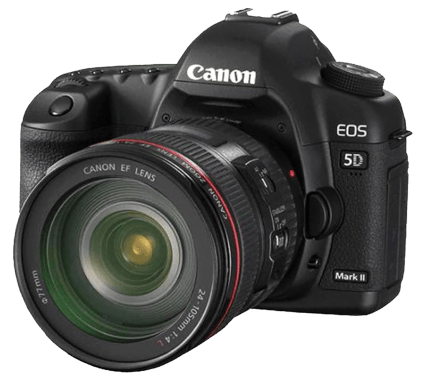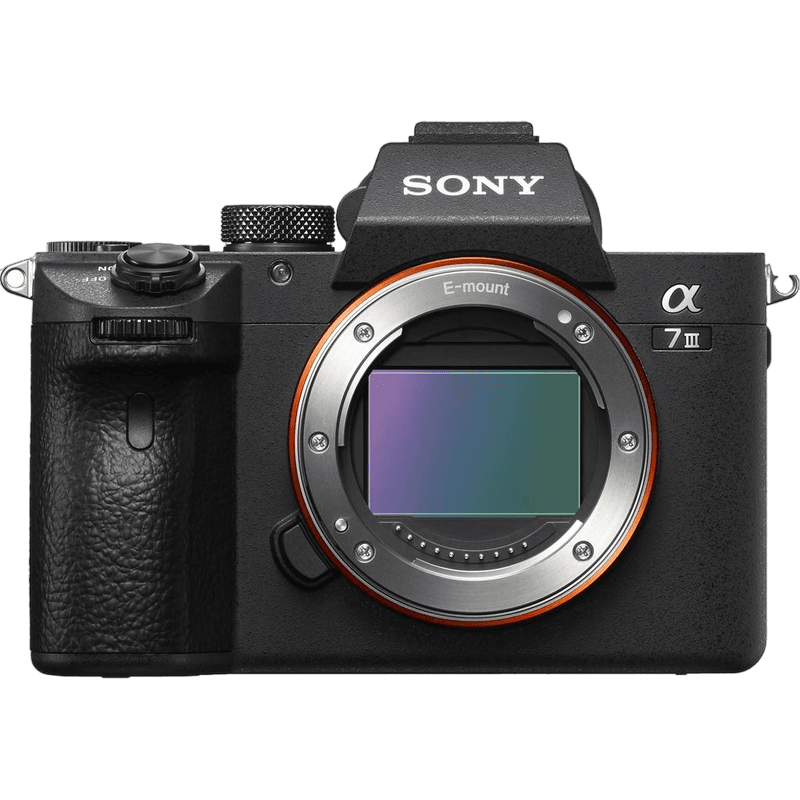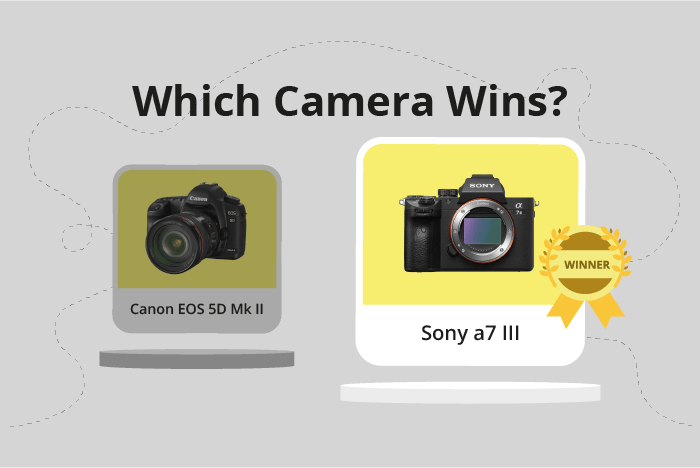Canon EOS 5D Mark II vs Sony a7 III Comparison
Canon EOS 5D Mark II

Sony a7 III

The Sony a7 III comes out as the winner with a score of 81, outperforming the Canon EOS 5D Mark II, which scored 58/100. Both cameras were launched with a similar price range, Canon at $2199 and Sony at $2000. They also share similar dimensions, with Canon measuring 152 x 114 x 75mm and Sony measuring 127 x 96 x 74mm.
The Sony a7 III is the better option due to its higher score, which it earned by being a more advanced camera. It’s a mirrorless camera, which makes it lighter at 650g compared to Canon’s DSLR, which weighs 850g.
On the other hand, the Canon EOS 5D Mark II has its advantages, such as being a DSLR, which some photographers prefer due to their familiarity with the system. However, the Sony a7 III’s higher score and more recent release date make it the more appealing choice for most photographers.
Canon EOS 5D Mark II vs Sony a7 III Overview and Optics
The Sony a7 III outperforms the Canon EOS 5D Mark II in optics, with a score of 81/100 compared to the Canon’s 59/100. Both cameras share some common specifications, such as having a full-frame CMOS sensor and utilizing a proprietary lens mount (Sony FE for the a7 III and Canon EF for the 5D Mark II).
The Sony a7 III has several advantages over the Canon EOS 5D Mark II. With 24.2 megapixels, it offers a higher resolution than the 21-megapixel 5D Mark II, resulting in more detailed images. The a7 III also boasts a faster shooting speed at 10 frames per second, compared to the 3.9 frames per second of the 5D Mark II. This makes the Sony more suitable for capturing fast-moving subjects. In terms of image quality, the a7 III’s sensor has a DXOMARK score of 96, significantly better than the 5D Mark II’s score of 79. Furthermore, the a7 III features image stabilization, which helps reduce camera shake and blur, while the 5D Mark II lacks this feature.
On the other hand, the Canon EOS 5D Mark II still has some merits. Its Digic 4 processor, although older, has proven to be reliable and efficient. However, the Sony a7 III’s Bionz X processor is more advanced, providing faster processing and better performance.
Taking all factors into account, the Sony a7 III’s superior optics make it a better choice for photographers seeking higher resolution, faster shooting speed, and better image quality. The Canon EOS 5D Mark II, while a reliable camera, falls short in these aspects compared to the a7 III.
Canon EOS 5D Mark II vs Sony a7 III Video Performance
The Sony a7 III outperforms the Canon EOS 5D Mark II in video capabilities, with a video score of 70 to the Canon’s 43. Both cameras share some common specifications, such as a maximum video frame rate of 30fps.
The Sony a7 III holds an advantage with its 4K video resolution, offering a maximum video dimension of 3840 x 2160. This is significantly higher than the Canon EOS 5D Mark II, which only supports Full HD video with a maximum dimension of 1920 x 1080. The higher resolution of the Sony a7 III allows for more detailed and sharper video quality, making it a better choice for videographers seeking optimal video performance.
On the other hand, the Canon EOS 5D Mark II still provides decent video quality in Full HD resolution. For users who do not require 4K resolution, the Canon EOS 5D Mark II could be a suitable option. However, it is worth noting that the Sony a7 III’s higher video score is primarily due to its superior video resolution and built-in timelapse function.
Taking these specifications into account, the Sony a7 III is the better camera for video capabilities. Its 4K video resolution provides a significant advantage over the Canon EOS 5D Mark II’s Full HD resolution. While the Canon EOS 5D Mark II might suffice for users who are not after 4K video, the Sony a7 III stands out as the superior choice for those seeking top-notch video performance.
Canon EOS 5D Mark II vs Sony a7 III Features and Benefits
The Sony a7 III outperforms the Canon EOS 5D Mark II with a feature score of 81/100 compared to 54/100. Both cameras share some similarities, including a 3-inch screen size, screen resolutions of 921,600 and 920,000 dots respectively, and WIFI capabilities. However, the Sony a7 III excels in several areas, making it the better camera in terms of features.
The Sony a7 III boasts a touchscreen, a flip screen, and Bluetooth connectivity, which the Canon EOS 5D Mark II lacks. These features improve the user experience, making it easier to navigate menus, capture images from different angles, and connect to other devices.
The Canon EOS 5D Mark II has no significant advantages over the Sony a7 III in terms of features. The slight difference in screen resolution is negligible and does not impact the overall user experience or image quality.
In comparing the features, the Sony a7 III is clearly the superior camera, offering a touchscreen, flip screen, and Bluetooth capabilities that the Canon EOS 5D Mark II does not have. The Canon EOS 5D Mark II falls short in these areas, making it a less desirable choice for those seeking a camera with advanced features.
Alternatives to the Canon EOS 5D Mark II and Sony a7 III
Are you still undecided about which camera is right for you? Have a look at these popular comparisons that feature the Canon EOS 5D Mark II or the Sony a7 III:

